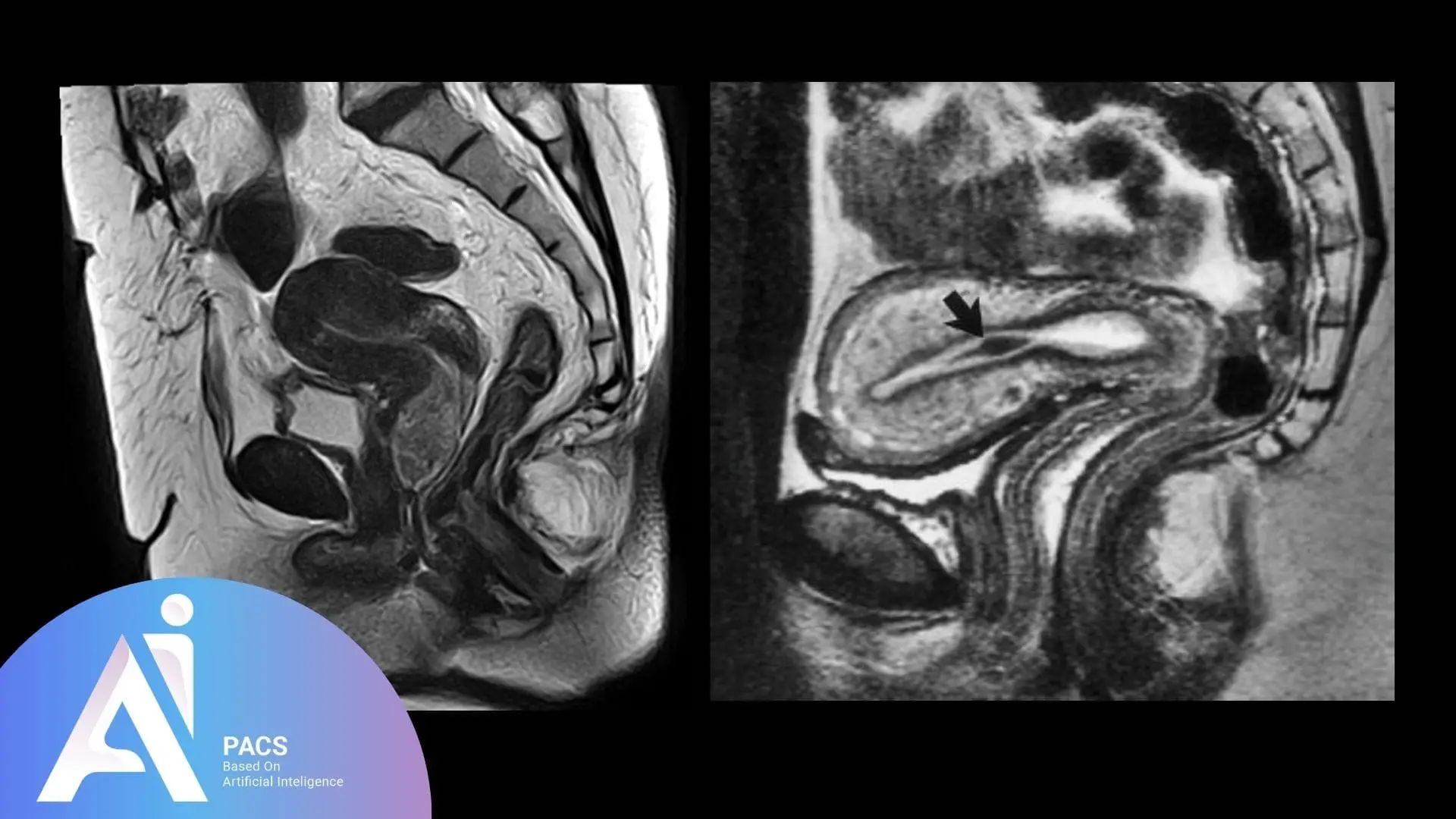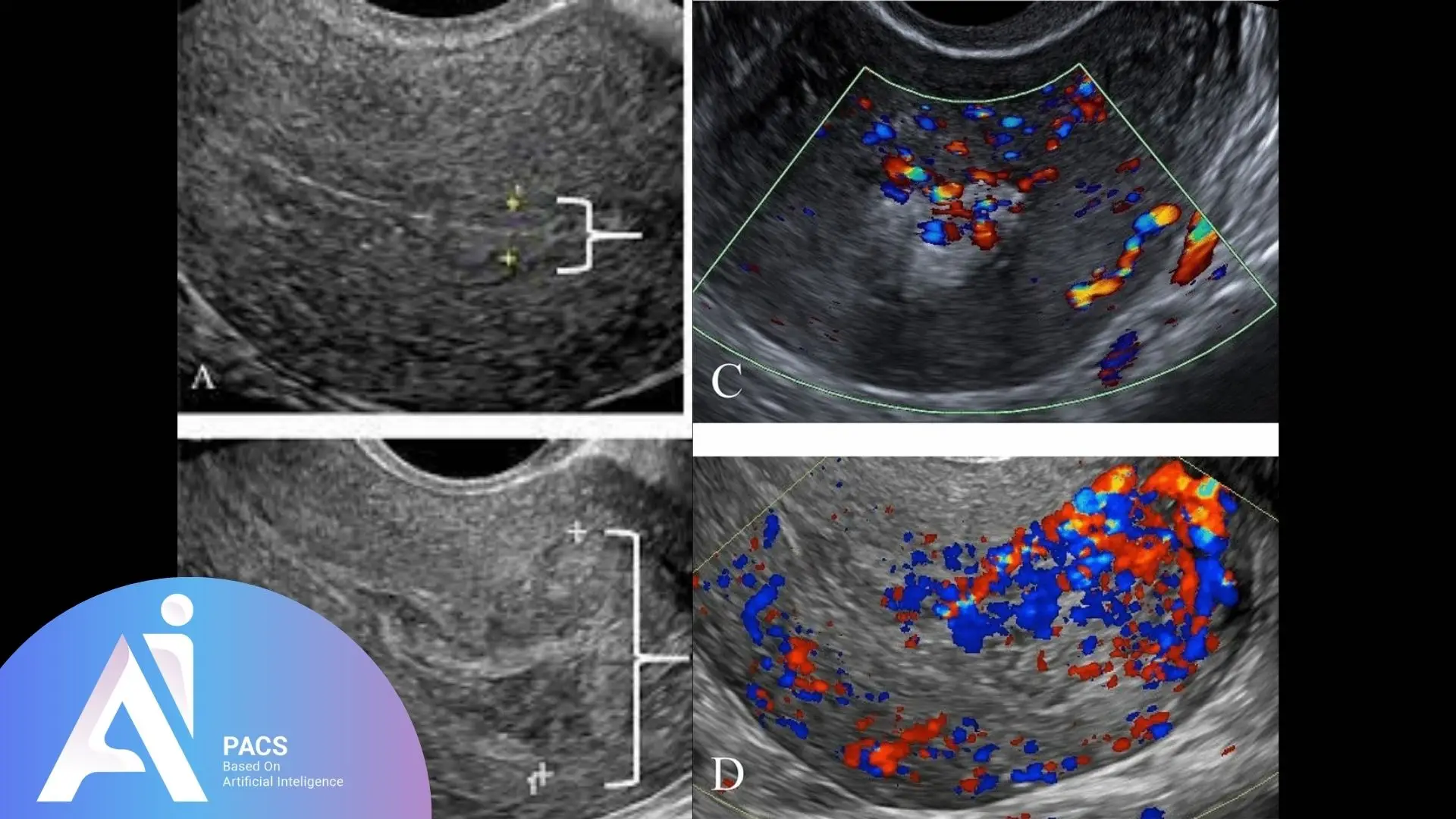Abnormal uterine bleeding (AUB) is a common concern among women of all ages, presenting as irregular or heavy menstrual bleeding, sometimes with lower abdominal pain. The causes vary widely depending on the patient’s age and range from benign structural issues to hormonal dysfunction, fertility-impacting conditions, and malignancies that require urgent attention.
I’m Dr. Vahid Alizadeh. In this article from the “When, Why, Who” series, I will explain how imaging plays a crucial role in diagnosing the causes of AUB and informing treatment plans, ensuring that women receive accurate and timely care.

A Patient’s Journey:
From Chronic Symptoms to Clear Answers
A 38-year-old woman has experienced heavy, irregular periods for over a year, with intermittent pelvic pain. She has seen multiple physicians and undergone laboratory tests, but her symptoms persist. An ultrasound revealed a possible endometrial polyp, while an MRI identified multiple intramural fibroids and confirmed the polyp within the uterine cavity. This clarity allowed her gynecologist to plan appropriate treatment, improving her symptoms and fertility prospects.
Why Is Imaging Important in Abnormal Uterine Bleeding?
AUB can stem from:
- Structural abnormalities (polyps, fibroids, adenomyosis)
- Hormonal dysfunction (including pituitary-related causes)
- Malignancies (especially in post-menopausal women)
- Ovarian and adnexal masses producing hormones or causing mechanical issues
How Imaging Helps:
- Ultrasound is the first-line tool for assessing the endometrium, uterine size, and adnexa.
- MRI provides a detailed evaluation of uterine and adnexal structures, accurately characterizing fibroids, adenomyosis, and polyps and distinguishing between benign and suspicious masses.
- MRI of the brain may be indicated when central hormonal causes (pituitary issues) are suspected.
- Imaging is essential for staging and treatment planning if malignancy is suspected.

When Should Imaging Be Performed for AUB?
Urgent Imaging Is Needed If:
- Severe bleeding with hemodynamic instability
- Post-menopausal bleeding
- Acute pelvic pain with bleeding, raising suspicion for complications like torsion or malignancy
Routine Imaging Is Beneficial When:
- Chronic heavy or irregular bleeding impacts the quality of life or fertility
- There is a history of failed medical management
- Evaluation before assisted reproductive procedures
Who Should Get Imaging and Expert Review?
Candidates for Imaging Include:
- Women with chronic abnormal bleeding unresponsive to treatment
- Those with suspected structural abnormalities (polyps, fibroids)
- Patients with fertility concerns
- Women at increased cancer risk due to age or family history
- Those with suspected hormonal dysfunction requiring pituitary evaluation
Why Second Opinions Matter:
Determining the exact cause of AUB can be challenging, particularly in differentiating between benign and malignant conditions, as well as between structural and hormonal causes. A second opinion from an expert radiologist ensures the accurate interpretation of existing imaging and provides recommendations for further evaluation, helping to prevent delays that can impact treatment and outcomes. This is particularly important in chronic cases, where scattered imaging from different facilities requires an integrated review to create a clear diagnostic roadmap.
AI-PACS Is With You
At AI-PACS.com, we provide expert second opinions for women experiencing abnormal uterine bleeding, reviewing all available imaging and clinical history to:
- Clarify the underlying cause of AUB
- Determine whether urgent intervention is needed
- Assist in planning appropriate imaging and treatment
- Evaluate fertility implications and cancer risks
Get your imaging reviewed by an expert to gain clarity and peace of mind
Final Thoughts
Abnormal uterine bleeding is a complex condition with a wide range of potential causes, from benign structural issues to serious malignancies. Timely, accurate imaging is essential in clarifying these causes, allowing for effective treatment and avoiding unnecessary delays.
If you or a loved one is dealing with chronic or acute abnormal uterine bleeding, consider an expert imaging review to guide the following steps and ensure comprehensive care.
Reference:

